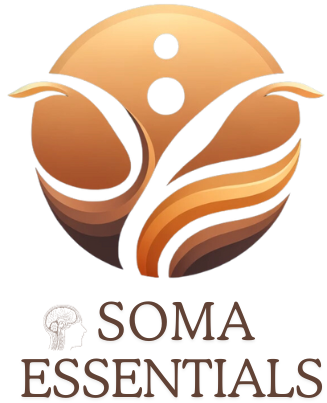Developing Body Intelligence and Self-Regulation: A Guide to Somatic Education
In today’s fast-paced world, we are constantly bombarded with external stimuli and distractions that can leave us feeling disconnected from our bodies. This can lead to a range of issues, from chronic pain and tension to anxiety and stress. Fortunately, there is a solution that can help us reconnect with our bodies and develop a deeper understanding of ourselves – somatic education. This powerful practice focuses on developing body intelligence and self-regulation, allowing us to better navigate our physical, emotional, and mental well-being. In this article, we will explore the benefits of somatic education and how it can transform your life. Whether you are looking to improve your posture, manage stress, or simply enhance your overall sense of well-being, this guide to somatic education will provide you with the tools and knowledge you need to achieve your goals.
To begin, let’s define somatic education. It is a holistic approach to movement and therapy that focuses on the connection between the mind, body, and emotions. Somatic education helps individuals become more aware of their bodies and understand how their physical, emotional, and mental states are interconnected. This understanding allows for better self-regulation and a deeper mind-body connection.
Somatic education is a form of experiential learning, where individuals use movement and body awareness techniques to explore their physical and emotional patterns. This approach can be beneficial for anyone looking to enhance their overall well-being and develop a deeper understanding of themselves.
One of the main benefits of somatic education is the development of body intelligence. This refers to the ability to listen to and understand the signals our bodies are sending us. Through somatic practices, individuals can learn to tune in to their bodies and identify areas of tension, pain, or discomfort. This allows for a more mindful approach to movement and can help prevent injuries or alleviate chronic pain.
Another important aspect of somatic education is self-regulation. This refers to the ability to regulate our emotions, thoughts, and behaviors in response to different situations. Somatic practices can help individuals become more aware of their emotional patterns and learn how to manage them in a healthy way. By connecting the mind and body, somatic education can also help individuals regulate their physical responses to stressors, leading to a more balanced and calm state.
Somatic education can also improve overall physical performance and enhance daily activities. By developing body awareness and understanding how our bodies move, we can improve our posture, balance, coordination, and flexibility. This can be especially beneficial for athletes or individuals looking to improve their athletic performance.
Moreover, somatic education can have a positive impact on mental health. By becoming more aware of our bodies and emotions, we can develop a deeper understanding of ourselves and our thought patterns. This can lead to increased self-acceptance, confidence, and a more positive outlook on life.
In conclusion, somatic education offers numerous benefits for individuals looking to improve their overall well-being and develop a deeper mind-body connection. By becoming more in tune with our bodies and emotions, we can enhance our physical performance, manage stress and emotions, and cultivate a better understanding of ourselves. Welcome to the world of somatic education, where you can discover the power of your body and mind working together.
Somatic Psychology
Somatic psychology is a branch of psychology that focuses on how our bodies hold memories, emotions, and beliefs. It utilizes techniques such as body-centered therapy and mindfulness to help individuals release trauma and negative patterns stored in the body, leading to improved body awareness and self-discovery.
Somatic Movement and Healing
Another aspect of somatic education is somatic movement and healing. This involves using movement to tap into the body’s innate wisdom and promote healing from within. Through practices like yoga, tai chi, or dance, individuals can develop a deeper understanding of their bodies and learn to move with intention and awareness.
Somatic Therapy and Exercises
Somatic therapy and exercises are essential elements of somatic education, helping individuals to release tension and trauma stored in the body. These techniques involve gentle movements and mindful practices that can have a profound impact on one’s physical and mental well-being.
The Feldenkrais method, developed by Moshe Feldenkrais, is a popular form of somatic exercise. It focuses on increasing body awareness and improving movement patterns through slow and deliberate movements. This can help individuals develop a deeper understanding of their body and how it moves, leading to improved coordination, flexibility, and posture.
The Alexander Technique, created by F.M. Alexander, is another widely practiced somatic exercise. It emphasizes the connection between the mind and body, teaching individuals to release unnecessary tension in order to move with more ease and efficiency. This can lead to reduced pain and tension, as well as improved overall well-being.
Body-Mind Centering, developed by Bonnie Bainbridge Cohen, is a somatic practice that focuses on the relationship between the body’s anatomy, movement, and consciousness. Through guided movements and hands-on work, individuals can explore their body’s patterns and habits, allowing for greater self-awareness and self-regulation.
Somatic education offers a unique approach to improving overall well-being by integrating the mind, body, and emotions. Through somatic therapy and exercises, somatic movement and healing, and somatic psychology, individuals can tap into the power of their body and mind working together to develop body intelligence and self-regulation. This can lead to reduced stress, improved physical health, and a deeper connection with oneself.

